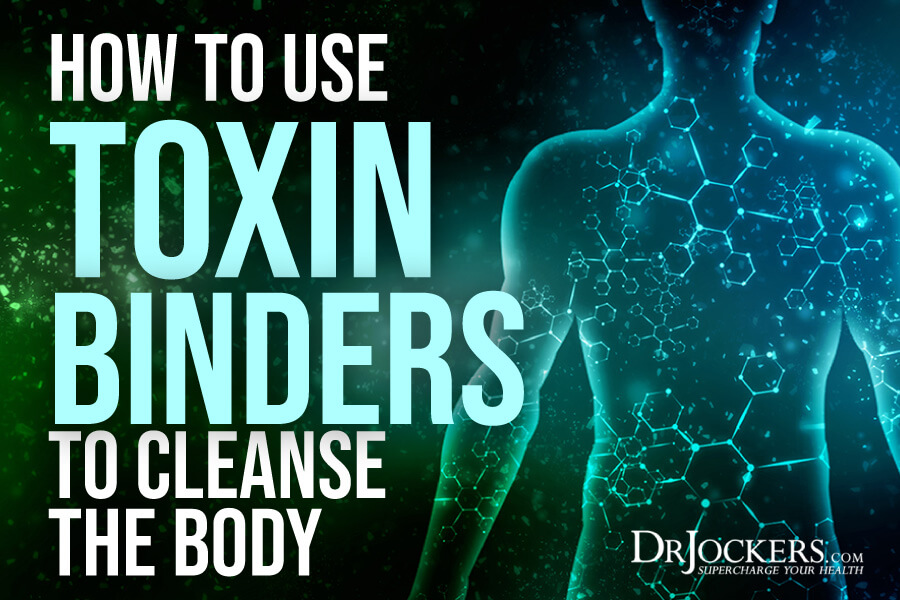 How to Use Toxin Binders to Cleanse the Body
How to Use Toxin Binders to Cleanse the Body
Our world is full of environmental toxins. Throughout your life, your body has been exposed to air pollution, pesticides, herbicides, mold, chemicals, and other toxins. Reducing your exposure to environmental toxins is important, however, you also need to support your body from reducing toxins already affecting your body.
Since toxins in your body can affect nutrient absorption, detoxification can become even more important than nutrition. This is where toxin binders come in. Binders can bind to toxins inside your body and help to remove them.
In this article, you will learn about toxins in our environment. You will understand why detox may be more important than nutrition. You will learn what binders are. You will learn about prescription binders and potential problems using them. I will go over the best natural binders to use. Finally, I will share my favorite toxin binder supplement.

Toxins in Our Environment
Unfortunately, our modern world environment is full of toxins. Our air, especially city air, is full of pollutants, including automobile gas and cigarette smoke. Various gases in our air that may harm your health include hydrogen chloride, benzene, dioxin, cadmium, asbestos, mercury, and chromium, which may harm your health.
Your indoor air may have mold mycotoxins and other allergens is in it. Your tap water may be contaminated with chloride, fluoride, lead, mercury, pharmaceuticals, pesticides, herbicides, and so on (1).
Non-organic food may contain pesticides, herbicides, artificial ingredients, hormones, and other additives. Conventional cleaning, hygiene, beauty, and body products are full of chemicals. Medications and even cheap supplements may contain harmful chemicals.
Conventional dentists still use amalgam mercury fillings and recommend fluoride treatments. We use plastic and plastic packaging for everything, of which bisphenol A (BPA) is particularly harmful to your health (1).
The list of chemicals and toxins in our environment is endless. Being aware and consciously reducing your exposure to these toxins is incredibly important. However, over your lifetime, you’ve been exposed to so many toxins.
No matter how careful you are now, it is still impossible to reduce all exposure to chemicals — unless maybe you move to an off-grid self-sustaining home in the middle of nature, away from everything, which is not a feasible option for most of us. Past and present exposure to the environmental toxins may detoxification is critical — possibly more important than nutrition.
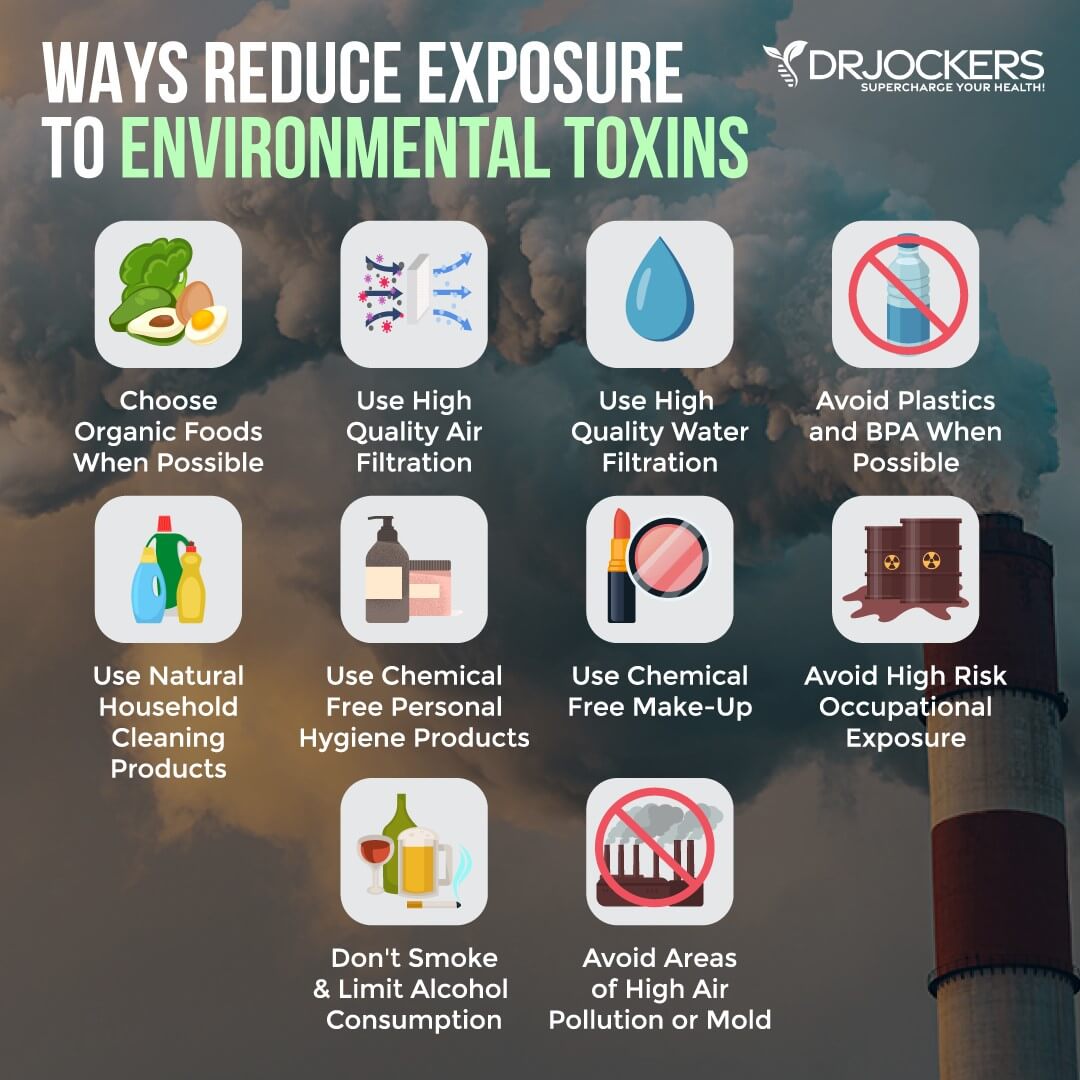
Why Detox May Be More Important Than Nutrition
If you’ve been following me for a while, you know that I talk about the importance of anti-inflammatory nutrition all the time. Nutrition is important. It is one of the top things you can do for your health and well-being. When it comes to toxins, however, detox may be even more important than nutrition.
Toxicity from environmental toxins may block your body’s ability to effectively absorb and utilize nutrients in your diet. This means that if your body is overwhelmed with toxins, no matter how good your diet may be, your body never gets to use it, and your health won’t improve. You need to remove those toxins for nutrition to work.
Detoxifying from environmental toxins may improve nutrient absorption and can offer various health benefits. For example, a 1989 study published in Biomaterials, Artificial Cells, and Artificial Organs has found that using activated charcoal may help to delay age-related structural changes and help increase longevity by absorbing and helping to remove toxins from the body (2). According to a 2012 review published in the Journal of Environmental and Public Health, environmental toxins can lead to chronic health conditions making detoxification and supportive therapies critical for our health (3).
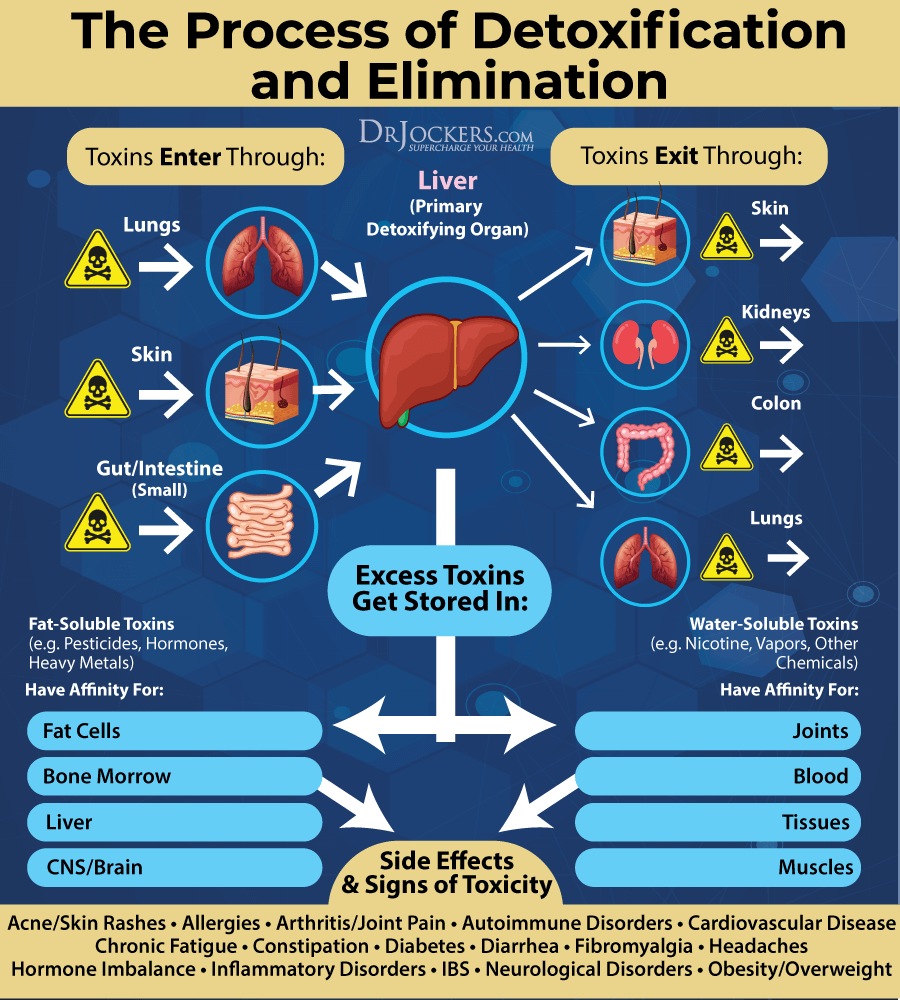
What are Binders?
Binders are various substances that ‘bind’ to toxins by either trapping them or attracting them through a negative charge in your body than help them remove them through bowel movements.
Binders are fantastic tools for detoxifications and are often recommended by functional medicine practitioners like myself. There are a number of different binders that you can turn to. They all offer different benefits and different levels of effectiveness.

Prescription Binders
Before I go over the best natural binders and my favorite supplement for detoxification, I want to touch on prescription binders. There are several prescription medications that are off-label and are also used as binders. Cholestyramine (Questran) and colesevelam (Welchol) are cholesterol-lowering medications that are also commonly used as binders, particularly for mycotoxins, off-label. These prescription binders work by binding to mycotoxins as bile moves through your intestines (4).
According to a 2013 study published in Scientific World Journal, prescription binders may help to remove mold mycotoxins and reduce issues related to mold exposure from water-damaged buildings (5). According to a 2013 study published in ISRN Toxicology, they may also help to remove other environmental toxins, including perfluorinated compounds (PFCs), which are often used in water-repellants and non-stick products (6).
Prescription binders may help to assist detoxification, but they may lead to a number of issues as well. Side effects and health issues associated with prescription minders may include (4, 7, 8):
- Bloating, indigestion, upset stomach, heartburn.
- Constipation, especially when not drinking enough water or eating enough fiber.
- problem absorbing vitamin A, vitamin K, and other fat-soluble vitamins.
- Problems absorbing other medications.
- Mitochondrial dysfunction and related issues
- Hypothyroidism or worsening hypothyroidism symptoms
These prescription binders are also often made with artificial colors, artificial flavors, sugar, or artificial sweeteners, which can be incredibly harmful to your body and are toxic themselves.
If you must take prescription binders, it is important that you avoid these artificial ingredients and choose a compounded version from a compounded pharmacy. However, compounded options can be expensive and are usually not covered by insurance, making natural options even more appealing.
Though in some cases, pharmaceutical binders may be necessary, I recommend that you always start with natural options. In most cases, when combined with a healthy diet and lifestyle, natural binders are enough.
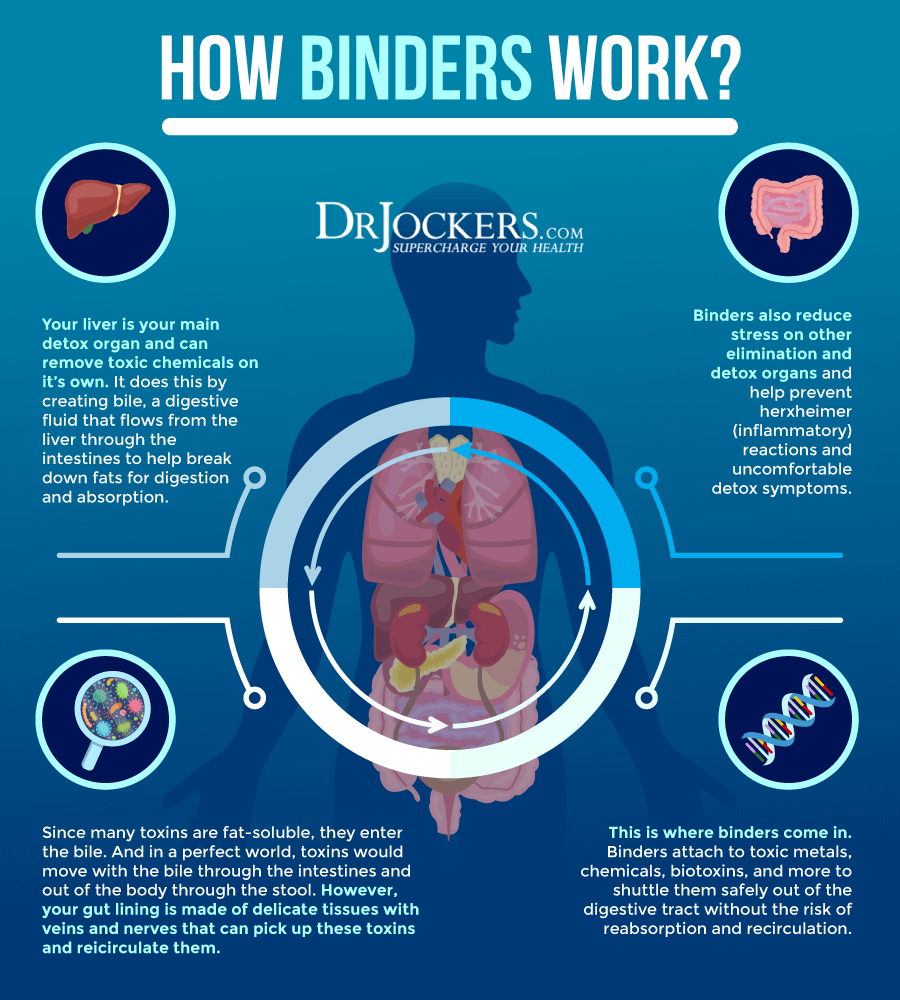
Best Natural Binders to Use
Here are the best natural binders I recommend. I will go over their benefits and also the possible drawbacks of each.
Activated Charcoal
Activated charcoal is a fine black powder that has been used as a toxin binder for several hundred years. Activated charcoal is used in cases of a drug overdose at some poison control centers and hospitals.
Activated charcoal is made from a carbon source, such as decomposed plants, wood, or coconut shells. Manufacturers expose this carbon source to an activating agent and high heat. This makes many tiny pores and allows a larger surface area for binding.
When ingested, activated charcoal moves through your gastrointestinal tract, and toxins get caught in the pores of the charcoal. Toxins get removed through bowel movements along with the activated charcoal.
Activated charcoal is generally sold in capsule form and you can take it away from meals. If you eat a meal with foods that your body is sensitive too, you can take charcoal with the meal to help reduce the inflammation from the food sensitivity. You can also open the capsule and dissolve it in liquid and drink the charcoal water mix if you have trouble swallowing the capsules.
Activated charcoal is great for binding with mold mycotoxins, pesticides, and some drugs, but doesn’t work well for heavy metals. A 1989 study published in Biomaterials, Artificial Cells, and Artificial Organs has found that using activated charcoal may help to delay age-related structural changes and help increase longevity by absorbing and helping to remove toxins from the body (2).
A 2019 review has found that it may be effective for removing toxins (9). It may also bind to some nutrients your body needs, so it’s important to take breaks between using activated charcoal.
Though activated charcoal helps to remove toxins, it doesn’t help to improve the gut lining if it has been damaged from toxins and infections. For some people, it may taste unpleasant, and some may experience unpleasant side effects, such as constipation and nausea. (10, 11, 12, 13).
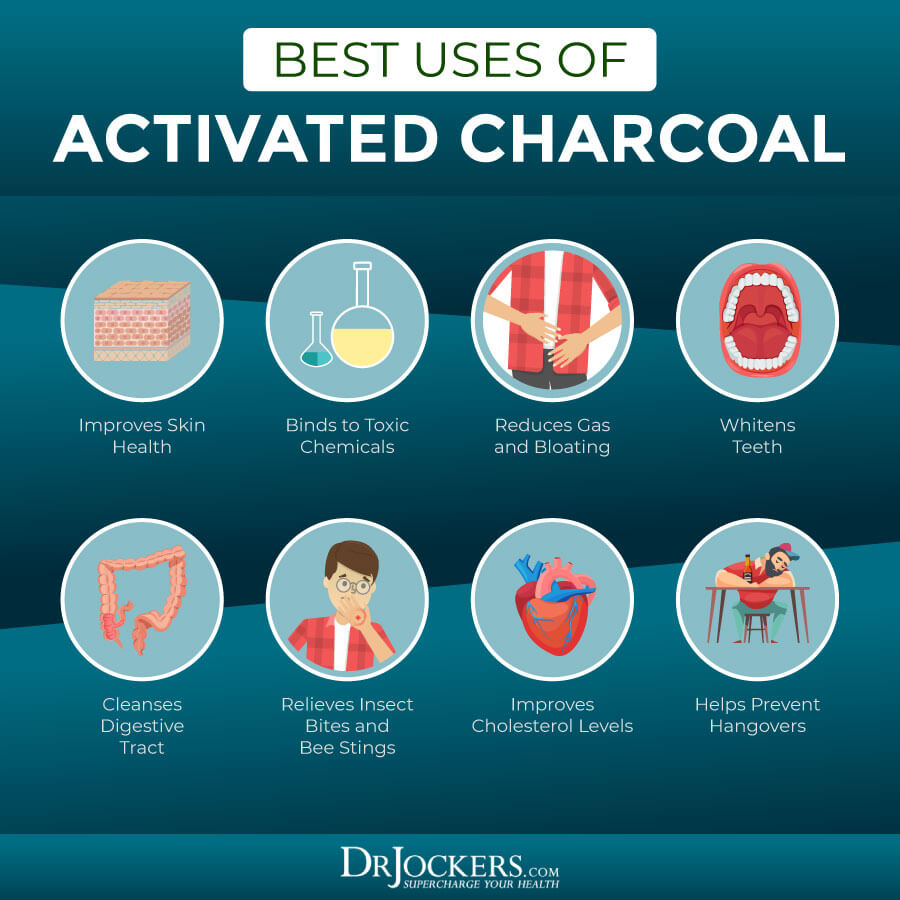
Bentonite Clay
Bentonite clay is another popular toxin binder that has been used since ancient times. It is a natural clay from the weathering of volcanic ashes. Bentonite clay was named after Fort Benton, Wyoming, a town rich in this specific clay. Bentonite clay is a powerful binder that helps to remove mycotoxins, pesticides, and heavy metals from your body. Because the binding ability of bentonite clay depends on the environment’s pH level, its effectiveness may vary depending on the gut environment.
A 2017 study published in the Journal of the Science of Food and Agriculture has found that bentonite clay may be an effective natural remedy (16). According to a 2018 study published in Biomarkers, bentonite clay may be effective for aflatoxin (15).
On the other hand, according to a 2018 study published in Food Additives and Contaminants, bentonite clay may not be effective at removing mold byproducts (16). It may also interfere with calcium uptake and thyroid hormones. In larger doses, it may cause issues in your intestinal cells (17, 18, 19).

Diatomaceous Earth
Diatomaceous earth (DE) is also referred to as fossil shell flour. It is a toxin binder created from the fossilized skeletons of diatoms, which are single-celled algae. Diatoms are enclosed in glassy silicon dioxide, which is often used as a food additive that helps dry ingredients not to stick together.
It’s important to note that only food-grade DE is safe for human consumption. Non-food-grade DE is not safe. According to a 2015 study published in the Journal of Animal Sciences and a 2015 study published in British Poultry Science, DE may be effective for reducing toxicity from various toxins, including aflatoxin and zearalenone (20, 21).
It may help to remove mycotoxins and heavy metals, however, efficiency depends on the pH levels in the body. One major problem when it comes to DE is that it may cause lung damage when inhaled thus may cause harm in workers processing it (22, 23, 24).

Pectin
Apple pectin or modified citrus pectin are popular toxin binders created from apple skin or the inner white pulp of citrus. Pectin is a polysaccharide found in the cell walls and concentrated in the peel of the fruit and it is a form of soluble fiber that the body doesn’t metabolize but gut bacteria can use as an energy source.
The most common use of pectin is for detoxifying heavy metals. A 2008 study published in Alternative Therapies in Health and Medicine has found that pectin may help to reduce the toxic levels from lead in children (25).
Though there is less research evidence, pectin may also help to remove pesticides or mycotoxins. More research is needed to evaluate its effectiveness in this regard. One of the potential issues with modified citrus pectin is that sometimes it’s not well made. If the molecules are too large they will not absorb and bind well (26, 27).
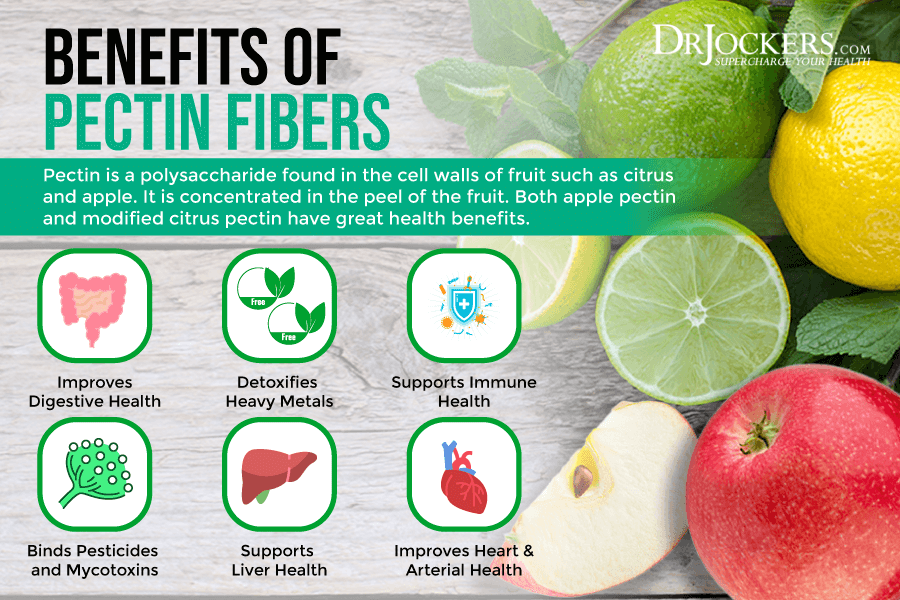
Chitosan
Chitosan is a commonly used toxin binder made from the shells of shrimp, crabs, and other shellfish. It may be purified with chemical or enzymatic processes. Some practitioners believe it is similar to cholestyramine but natural as these binders can both bind to mycotoxins and bile salts. A 2018 study published in Nanomaterials (Basel) has found that it may be effective for removing mycotoxins (28).
According to 2017 research published in the International Journal of Macromolecules has found that chitosan may also help to remove heavy metals (29). However, its effectiveness for heavy metals and some other toxins may depend on pH levels. Another benefit of chitosan is its ability to act as a prebiotic and to support gut microbial health. It is also used for weight loss by some. However, since it’s made from shellfish, it is not suitable for people with shellfish allergies or vegans or vegetarians (30, 31).
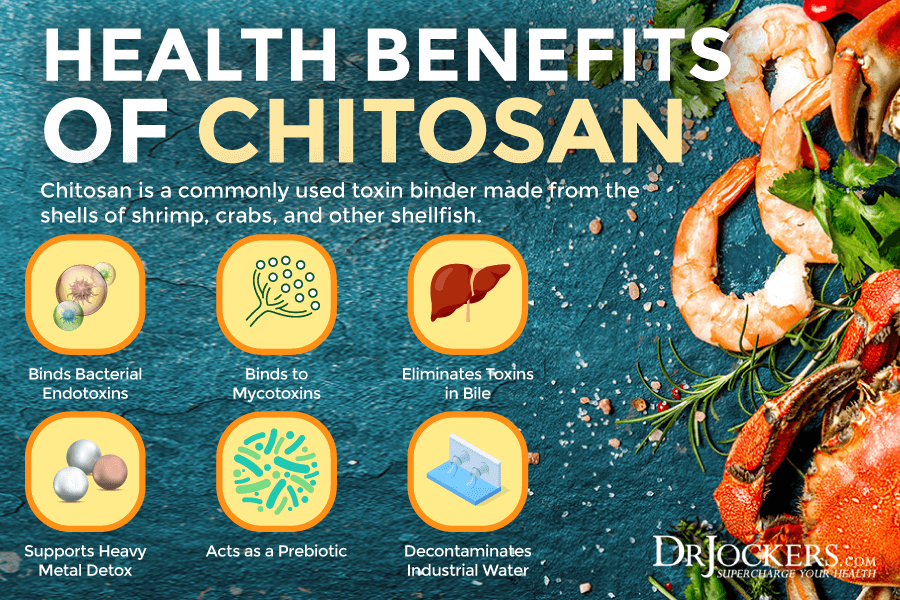
Silica
Silica or a silica-based gel is commonly used in various countries in Europe for food poisoning, acute gut infections, and even symptoms of IBS. According to a 2019 review published in Scientific Reports, silica may be effective for removing bacterial toxins (32).
Limited evidence, including a 2013 study published in the Journal of Alzheimer’s Disease, has found that it may also help to remove aluminum from the body (33). Silica may interfere with drug absorption so it’s important to stay away from taking any medication at least two hours before and after using silica. In some, it may also cause an upset stomach (34, 35).
Chlorella
Chlorella is a blue-green algae rich in minerals, vitamins, fibers, and amino acids. It can bind to dioxins, which are environmental pollutants released from manufacturing processes and burning garbage. Chlorella is most well-known for its ability to support detoxification from heavy metals. According to a 2019 study published in Antioxidants (Basel), chlorella may help to detox from dental heavy metals such as mercury amalgam fillings and titanium implants (36).
On the other hand, chlorella may not be effective for detoxification from cadmium and mercury. Though it may be a great binder, it may not support the excretion of heavy metals from the body enough. Since chlorella may be affected by toxin contamination in the sea, sea-sourced supplements may not be a good idea, especially long-term (37, 38, 39, 40).

Probiotics
Probiotics are beneficial bacteria that support microbiome imbalance. Probiotic-rich foods and probiotic supplements can help to repopulate your gut microbiome after antibiotic use or if you are dealing with microbiome imbalance.
They may help to reduce the risks and symptoms of various chronic diseases. Beyond supporting your microbiome, probiotics may act as a binder and may directly bind to mycotoxins.
According to a 2020 study published in Toxins, probiotics may be helpful for removing mycotoxins (41). A 2021 review published in Food and Chemical Toxicology has found that probiotics may support detoxification related to food contamination (42).
Certain strains of lactobacillus, including L pentosus and L beveris, work well for aflatoxins. Other strains, such as L planatrum, work well for other mycotoxins, such as sterigmatocystin.
S cerevisiae binds effectively to aflatoxins, and saccharomyces boulardii binds well to gliotoxin. Though probiotics may be helpful for detoxification from mycotoxins, they are not effective for other toxins, such as heavy metals, making other binders usually necessary (43, 44).
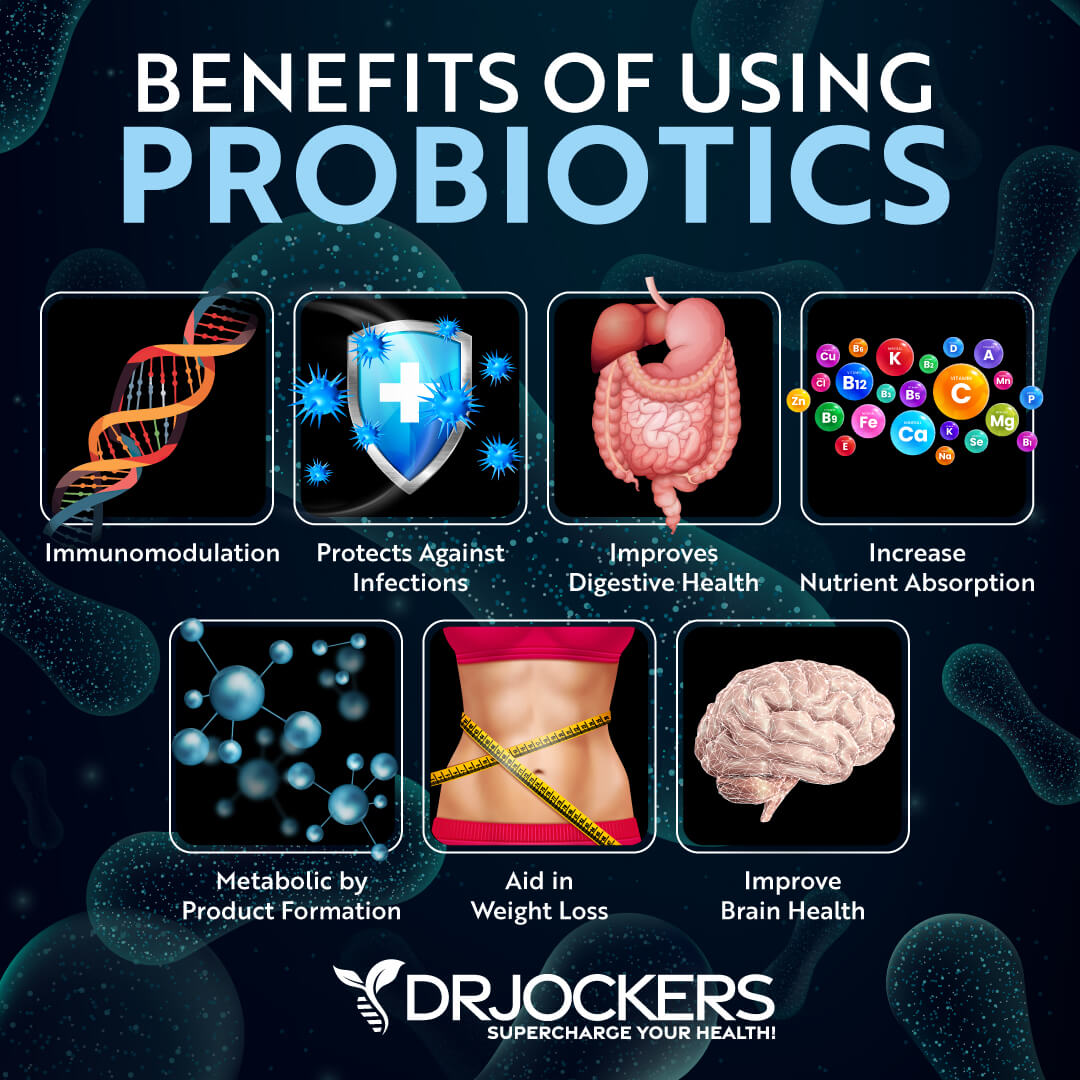
Zeolites
Zeolite is a naturally occurring volcanic mineral that was created thousands of years ago after volcanic eruptions produced volcanic ash and lava that chemically reacted with sea water.
This created a compound having a unique porous, and cage-like, honeycomb structure that is negatively charged. It is unusual in that it has a strong negative charge that attracts positively charged toxins and its cage-like structure traps the toxins so they can be safely removed from the body.
Zeolites are toxin binders made from silica, aluminum, and oxygen. One of their main benefits is helping detoxification from heavy metals. Natural zeolite clinoptilolite is generally safe for detoxification in humans. According to a 2019 review published in Molecules, zeolites are great detoxifying, anti-inflammatory, and antioxidant agents (45).
Zeolites may support detoxification from mycotoxins, heavy metals, pesticides, ammonia, radioactive materials, and other toxins. They may also support the gut-brain barrier, microbiome, immune health, and inflammatory balance. Since it goes beyond binding and may support the restoration of your gut health, it is one of the best toxins binders (46, 47, 48).
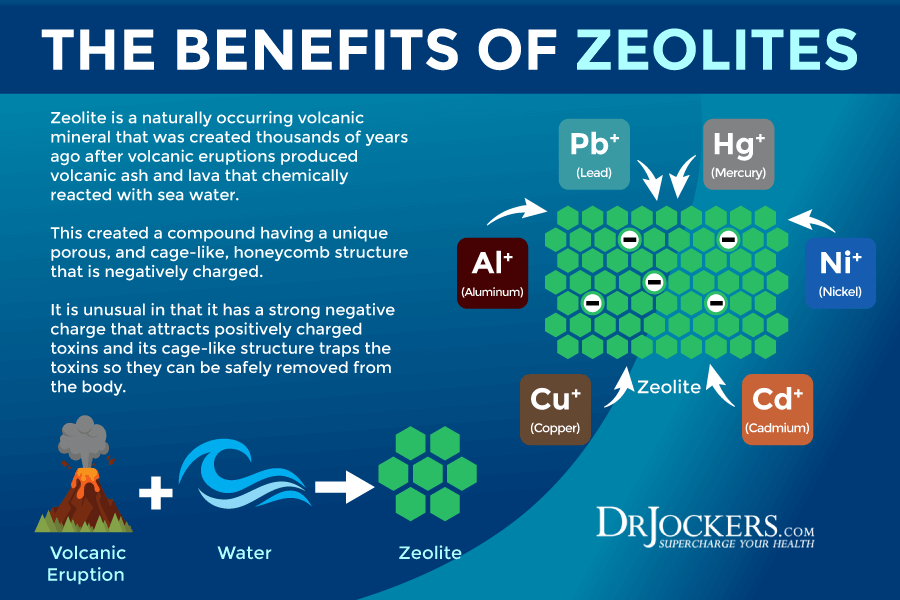
Bioactive Carbons
Bioactive carbons, including fulvic and humic acid, are some of the best toxin binders. Bioactive carbons are organic compounds in humus, a part of the soil. It is the richest in decaying plants or animal matter. Bioactive carbons help to improve the soil and the health of plants. They are also incredibly rich in minerals and support detoxification from heavy metals and other organic compounds.
According to a 2017 review published in the Journal of Chemistry, bioactive carbons help detoxification from heavy metals (49). According to a 2013 review published in Chemosphere, humic acid may help detoxification from pesticides (50). Humic acid and fulvic acid may also bind to and help remove benzo(a)pyrene from tobacco smoke, charred meat, coal tar, and pentachlorophenol from pesticides and disinfectants.
Bioactive carbons offer antioxidant protection, improve immune defense, microbiome support, and restoration of nutrients. They offer a natural delivery, offer strong binding, help the removal of toxins through bowel movements, and are safe long-term (51, 52, 53, 54, 55).
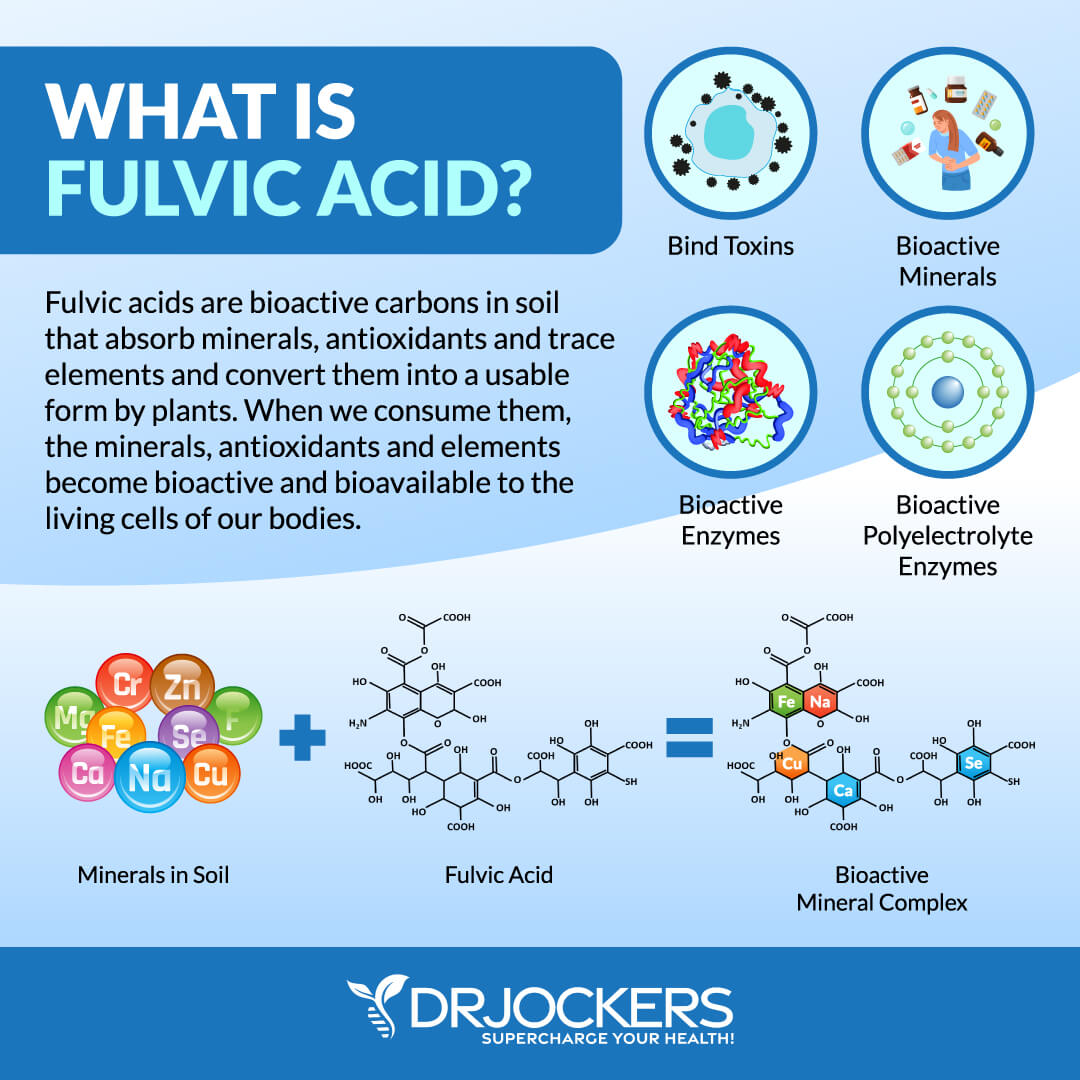
GI Detox
To detoxify your body from environmental toxins with the help of toxin binders, I recommend GI Detox. This supplement is a combination of nutrients formulated to provide broader activity than a single-ingredient product. Zeolite clay, activated charcoal, and silica are all binding agents with proven efficacy.
The other nutrients in G.I. Detox™+ support healthy digestion and elimination. The full-spectrum binding of G.I. Detox™+ provides a simple solution for environmental and internally produced detoxification. It supports healthy detoxification and full-body cleaning, reduces bloating and gas, helps the clearance of mold metabolites, supports mental clarity, and allows a more pleasant cleansing experience.
I recommend 1 capsule on an empty stomach with a full glass of water or as directed by a healthcare professional. Take 1 hour apart from other medications and supplements. Do not use during pregnancy. Consult your physician before using any supplement, especially if you are nursing, have a medical condition, or are taking medication. Discontinue use should adverse reactions occur. Keep out of reach of children. Store it in a cool dry place.
Final Thoughts
Throughout your life, your body has been exposed to air pollution, pesticides, herbicides, mold, chemicals, and other environmental toxins. Since toxins in your body can affect nutrient absorption, detoxification can become even more important than nutrition. I recommend using toxin binders to support detoxification from environmental toxins and support your overall health.
If you want to work with a functional health coach, I recommend this article with tips on how to find a great coach. On our website, we offer long-distance functional health coaching programs. For further support with your health goals, just reach out—our fantastic coaches are here to support your journey.
Inflammation Crushing Ebundle
The Inflammation Crushing Ebundle is designed to help you improve your brain, liver, immune system and discover the healing strategies, foods and recipes to burn fat, reduce inflammation and Thrive in Life!
As a doctor of natural medicine, I have spent the past 20 years studying the best healing strategies and worked with hundreds of coaching clients, helping them overcome chronic health conditions and optimize their overall health.
In our Inflammation Crushing Ebundle, I have put together my very best strategies to reduce inflammation and optimize your healing potential. Take a look at what you will get inside these valuable guides below!





This sounds very helpful for my health.
I can’t tell how to reply to the entire article, but I wanted to make a comment on prescription binders. I am not sure that they actually remove mycotoxins, but they do remove fragmented cellular waste from the terrible inflammation that comes with health conditions such as CIRS which can be triggered by mycotoxins. Heather binders do not touch this kind of waste which the body processes as toxins and gets backed up with. You can get these prescription binders without all the additives, but insurance usually won’t cover it and you need to go to a specialty pharmacy like one that does compounding. Interestingly enough, you can also use things like okra when she can get in capsules from some companies or you can eat okra beets also do the same thing, but neither one of these do it to the extent that the prescription binders do. There’s a really good lecture by Dr. Andrew Heyman on YouTube about this. I believe it’s called CIRS tool kit.
What about good old soluble fiber from legumes to interrupt the enterohepaticrecirculation and escort the old toxic bile out of our system?
Dr. Jockers,
Do you think your G.I. Detox is safe to use for someone who has hydronephrosis? Buildup of fluid/urine in the kidney.
Also will that Detox be sufficient enough for removing heavy metals, mycotoxins, and aflatoxins or will it need to be combined with other binders too?
Would a liver cleanse need to be conducted first, and/or a repair of any potential gut issues from previous antibiotic use in order for these detox methods to be affective?
Hello Robert, yes the GI Detox is safe and will be very effective. I would recommend working on the liver detoxification methods here: https://drjockers.com/liver-cleanse/
thank you! great and through information! Awesome!
Glad to hear this Andria!
Dr. Jockers has some of the best natural medicine advice around and this is a good list, but it is a shame that Cistus-Rock Rose, is not mentioned. Such an easy to use plant for making tea and provides a thorough detox as well as providing benefits. It grows all over the Greek islands, I just have to walk outside my front door and break off some branches. I like to harvest it late spring when a lot of resin is present and the leaves are so fragrant.
https://naturallyrecoveringautism.com/2019/03/18/cistus-tea-to-breakdown-biofilm-in-bacteria-and-viruses/
Available on Amazon.
Thanks for sharing Christy!
Hi Dr Jocker. I’m 64 yrs old, practicing a good diet (wheatbelly) and regular excercise. I have no known exposures to toxicity, but of course there may have occured. Do you recommend periodically trying these detox protocols? The Fulvic acid looks intriguing:)
Yes absolutely, I would definitely recommend doing a binder on a regular basis.
Interesting article, So what are the best foods WE should be having in our diet everyday to do a day by day as you go detox, so you do not have to do a hard detox so often.
As they remind us “Let food be thy medicine and medicine be thy food”. – Hippocrates 460 – 370 BC
Can the GI detox be used with CE’s. If so, Do you take the capsule before the CE? How long before?
Fantastic info! But…
you didn’t say how often, how much, how long and best time to take for any of the detox methods! Also:
Can I do a combination of these detox methods ?
Are there any supplements I should avoid combining with detoxes?
Please give me some direction as I am anxious to get started and honestly feel more confused than before I read this article!
I have used diatomaceous earth for over 30 years and have also used charcoal when necessary. I am 62 years old with no health issues. I have seen great results of DE use from people after chemo and have used a combination in dogs that were over vaccinated… I am a tue believer of using binders for toxins of all kinds. I will share your information, as you know if it’s too easy people tend to doubt.
Thanks for sharing that Patty!
This is such a gooood and informative article!
Would you please consider doing another teaching us to dissolve biofilms?
This is excellent information; much I knew but I learned some more.
Thank you very much.
This is excellent information.
Thank you.
Thank you so much for another super informative article, Dr. Jockers! Can you please clarify whether the GI Detox needs to be taken every day in order to see results, or if it can be taken just a few days a week? I’m a bit nervous to take a detox supplement on days when I would need to leave the house, in case it causes a herxheimer reaction. But I wouldn’t want to waste my money if it won’t benefit me to take it just a few days a week. Thanks!
Awesome articles as always!
Are any of these safe during breastfeeding?
Even in smaller, less frequent amounts?
The studies referred to for DE and BC were done on chicken, rats & piglets for weight gain purposes! wtf ?